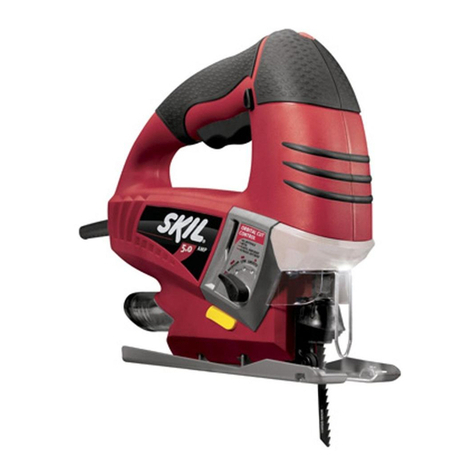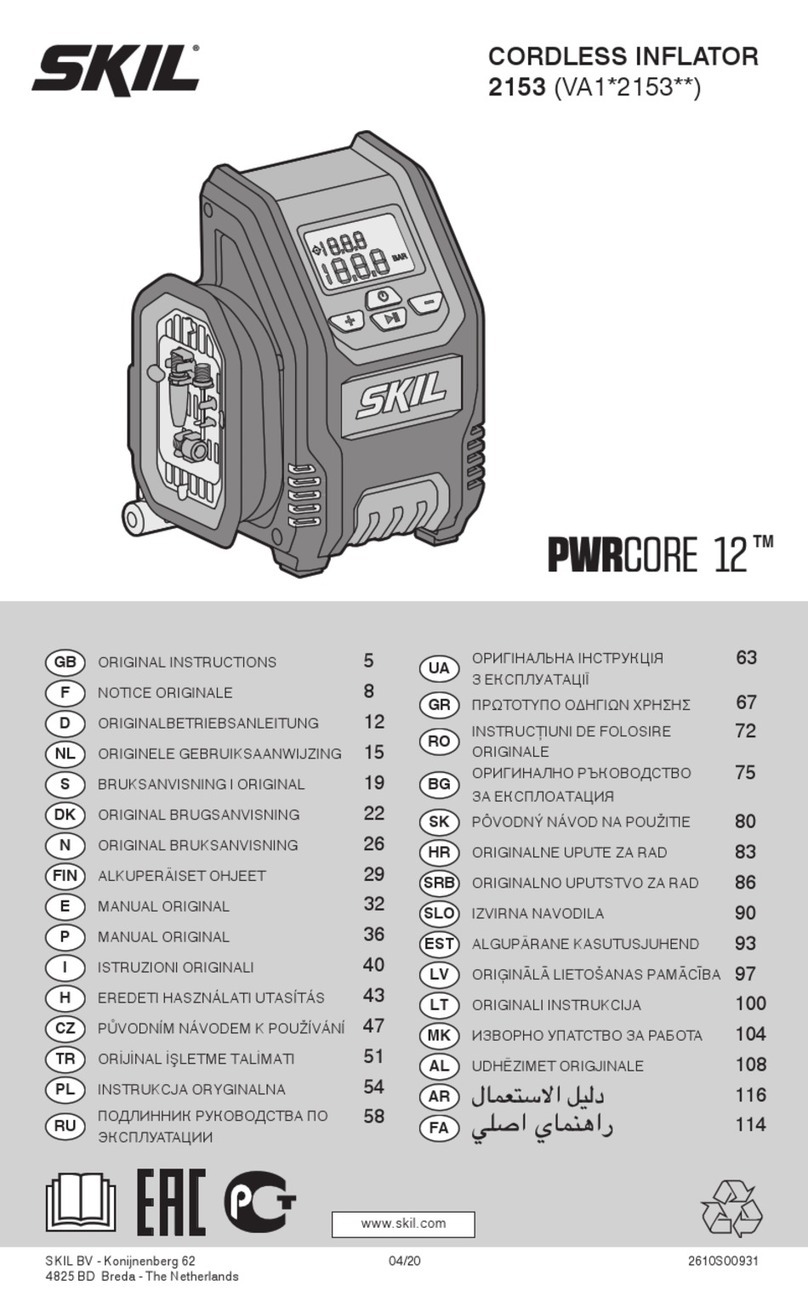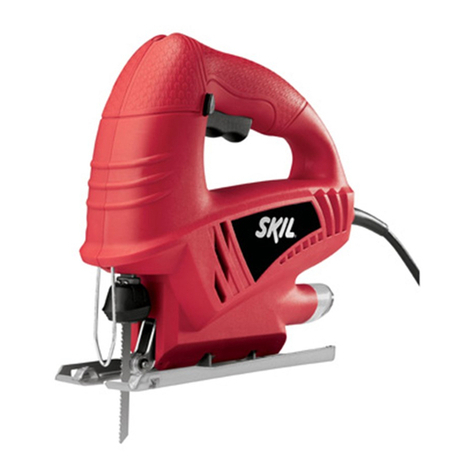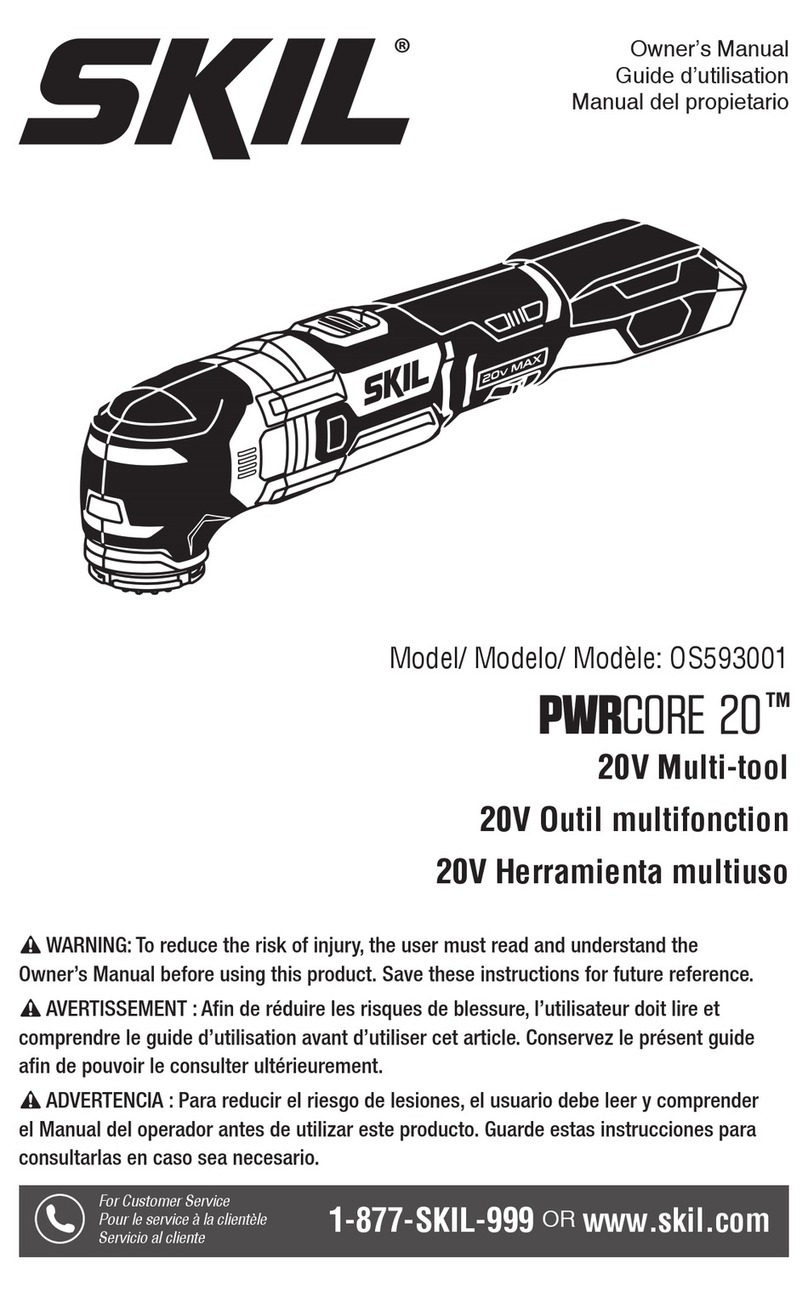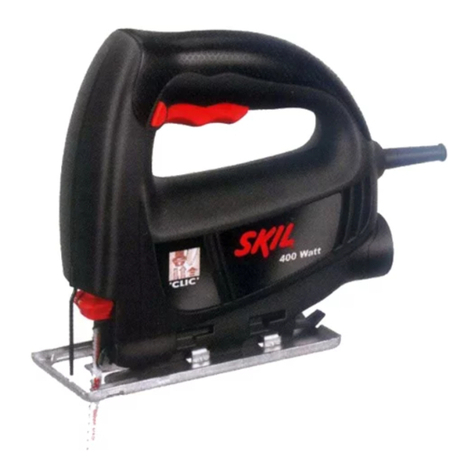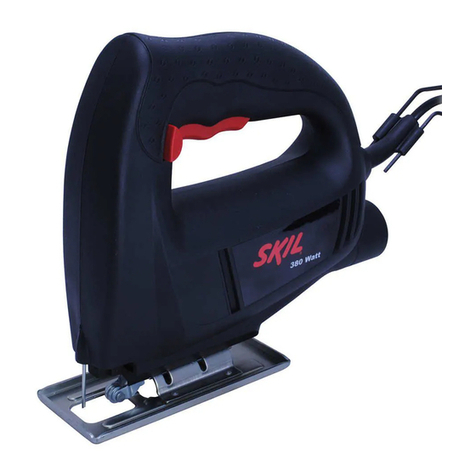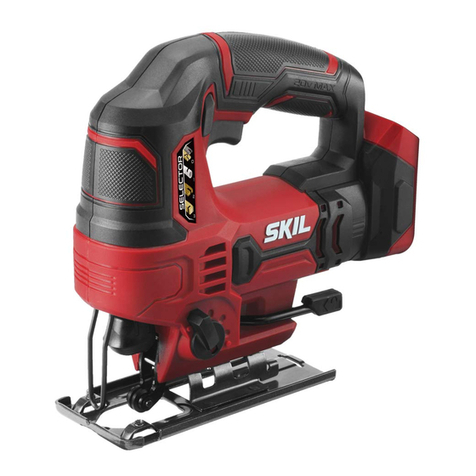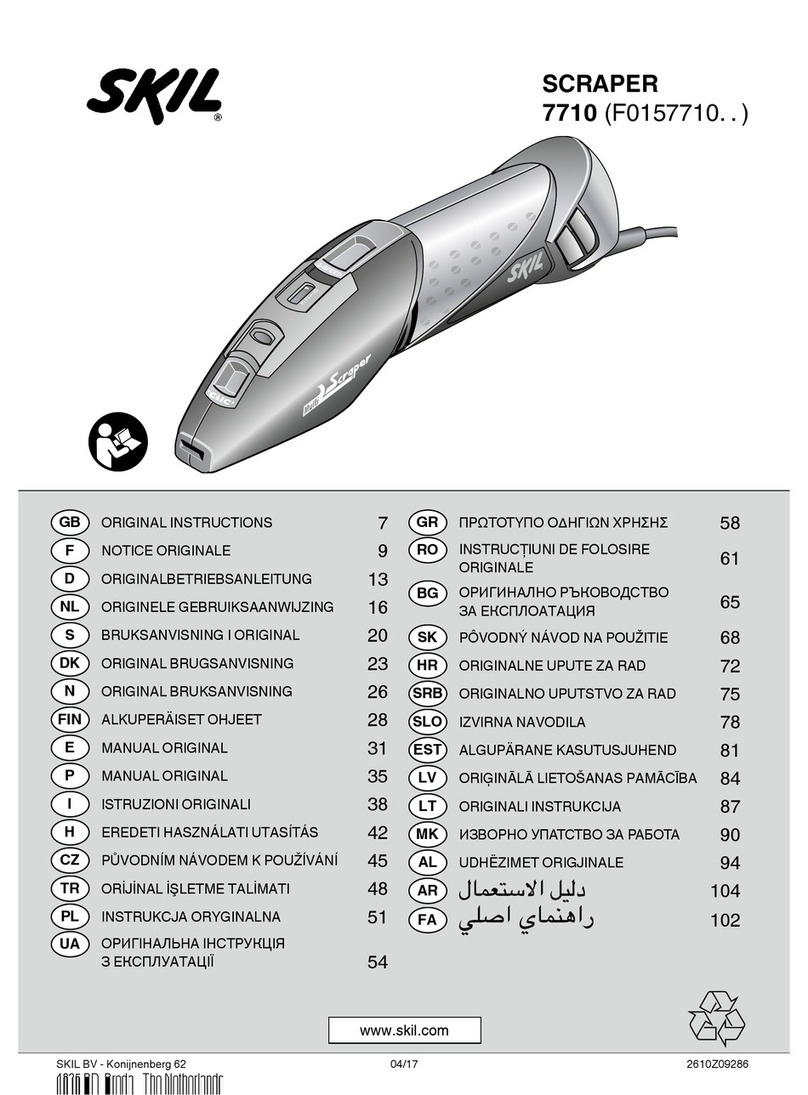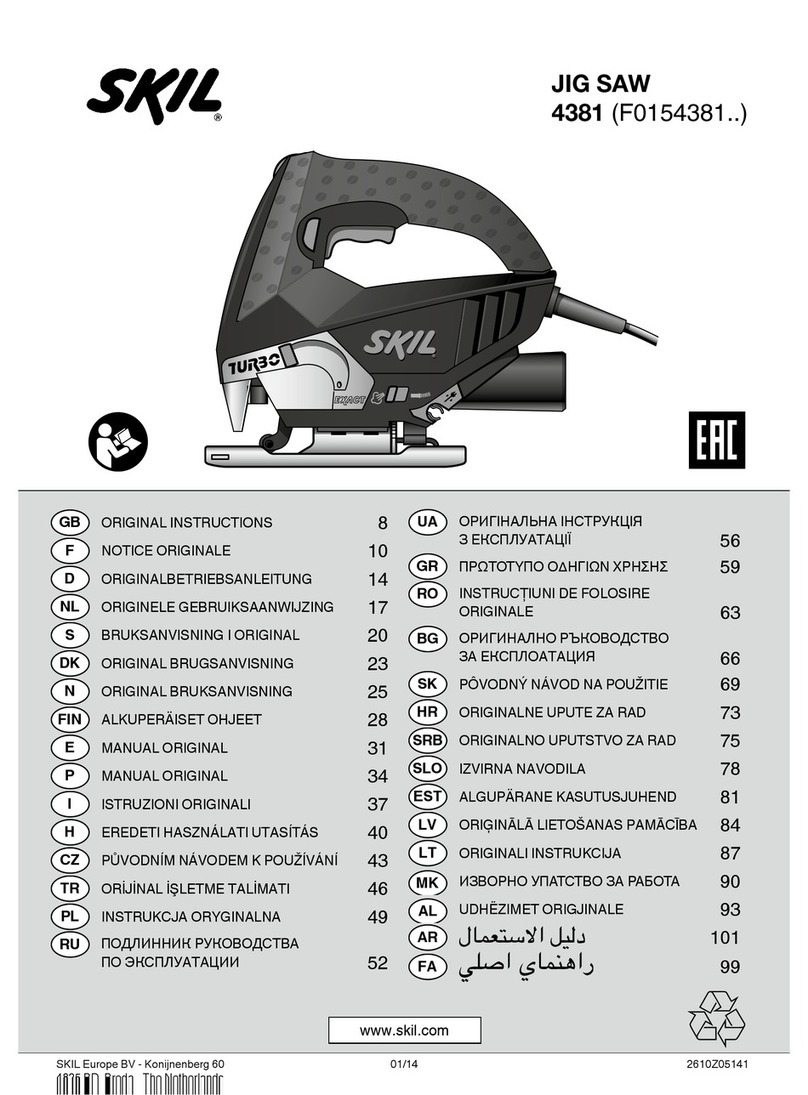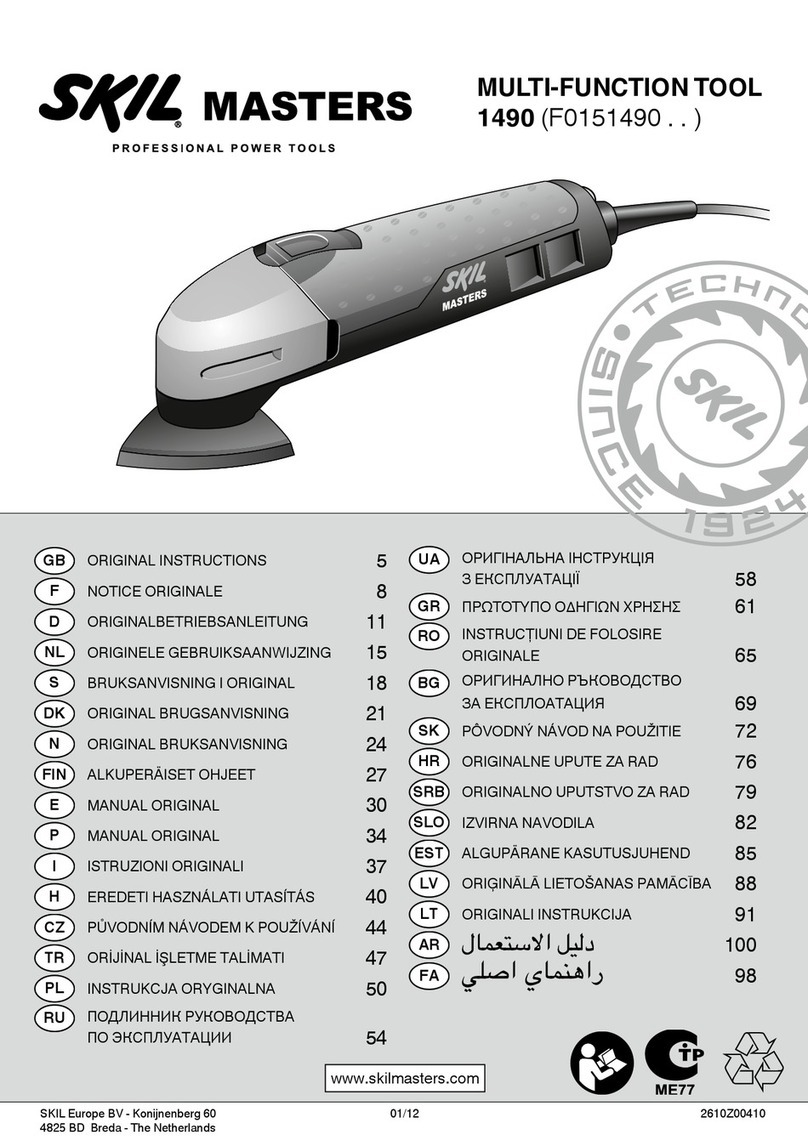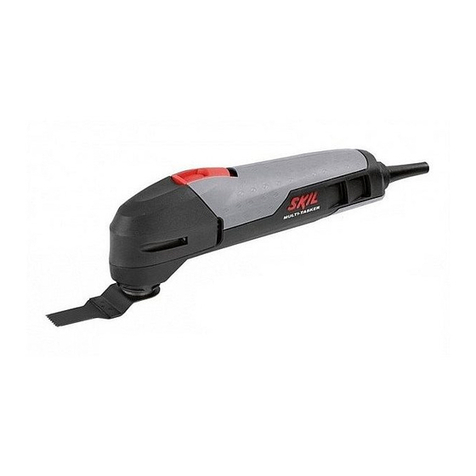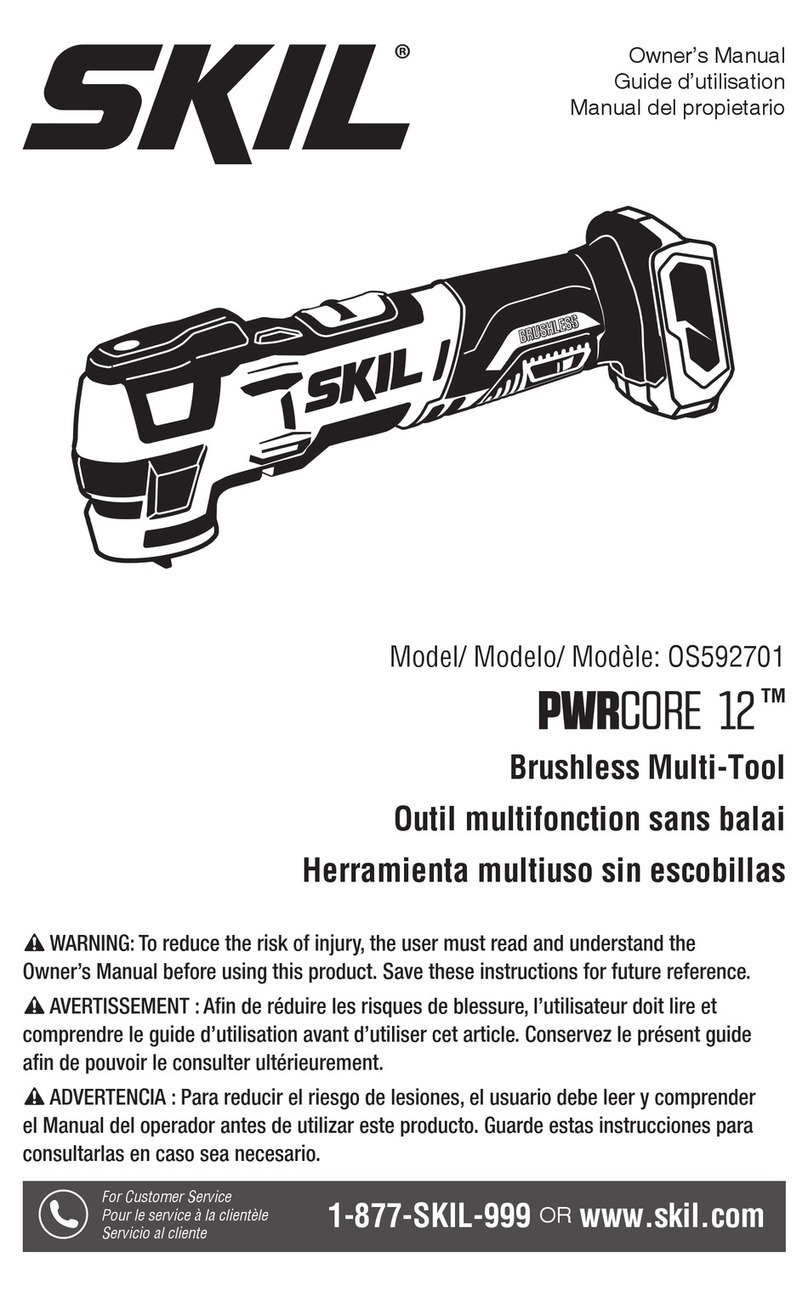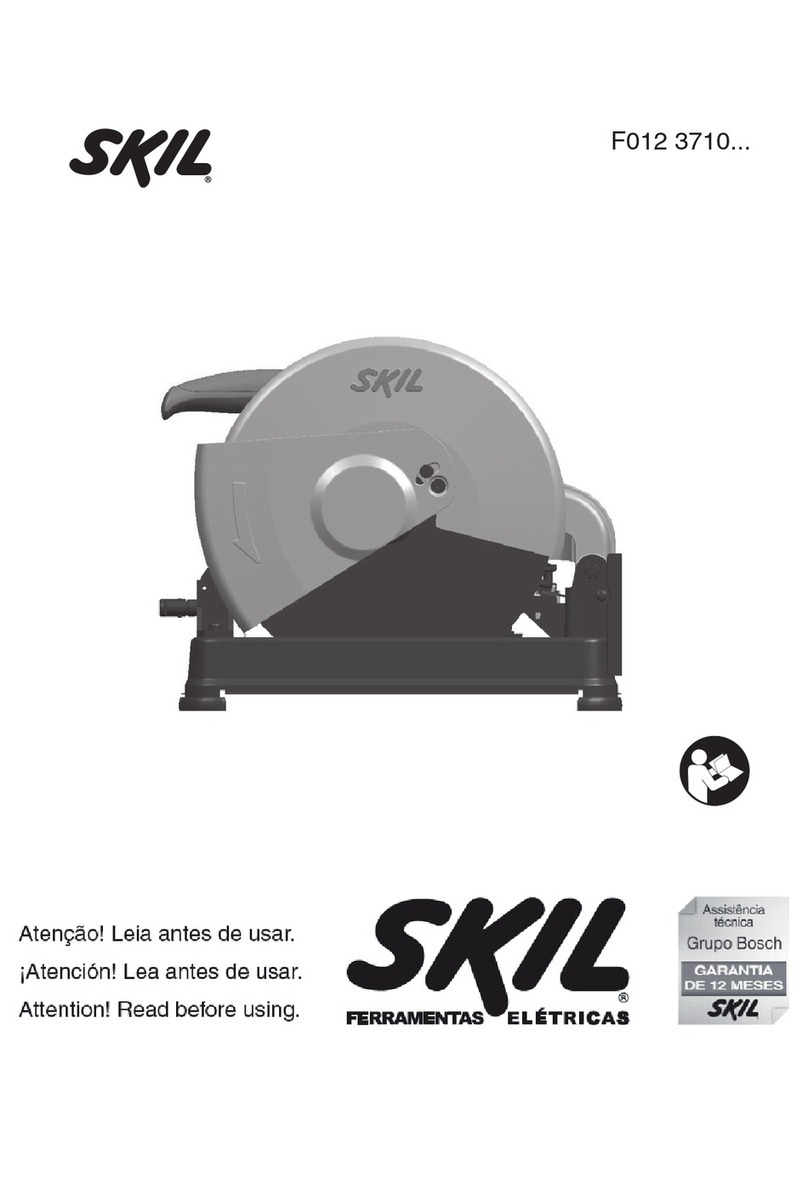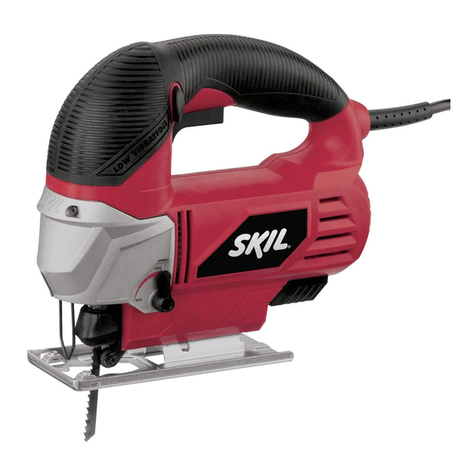
8
• Memory setting 9(8040)
-to select one of the four stored memory settings press
button P
-to store a temperature and air ow setting press
button P to select a memory location, set the desired
temperature and airow, and press and hold button N
to store the setting
• General use
-determine the right temperature by testing out on an
inconspicuous part of the workpiece; start with a low
temperature setting
-the temperature drops as the distance between the air
outlet/nozzle and the workpiece increases
-the temperature required depends on the material to
be worked on
• Stationary use q
-set the tool down on its rear in an upright position
-make sure the surface is clean and dustfree; polluted
air damages the motor
-make sure the air ow is directed away from you
-secure the cord to prevent pulling down the tool
-do not touch the air outlet/nozzle
-make sure nothing drops into the air outlet/nozzle
-carefully hold the tool with one hand while switching it
o with the other hand, and then allow it to cool down
• Holding and guiding the tool w
-hold the tool with one hand
-keep ventilation slots F 2uncovered
• Standard accessories 2
-glass protection nozzle G (for deecting air ow)
-round nozzle H (for concentrating air ow)
-reector nozzle J (for reecting air ow)
-reduction nozzle K (for concentrating air ow)
NOTES:
-all application examples (except removing paint
next to glass) can be performed without accessories;
however, using the appropriate accessory simplies the
work and signicantly improves the quality of the results
-this tool can also be used in combination with
commonly available accessories for heat guns
• Mounting/removing accessories
-simply t the accessory onto air outlet L 2
-remove an accessory by pulling it o to the front after it
has cooled down
! mount an accessory only when the air outlet is
cold, when the switch is in position “0” and when
the plug is disconnected
-use nozzle release ring E for easy removing hot nozzles
e
• Constant heat control (overload protection)
Protects heating element from damage when tool is
overloaded without having to stop it and/or let it cool
down for a period of time
-when the temperature gets too high, the heating
element switches itself o, while the motor continues to
run and produces cold air
-when the temperature has dropped suciently (taking
only a few seconds), the heating element will be
switched on automatically
! when the tool is switched o after working at a
high temperature setting, and switched on again
after a short break, it may take a while before the
heating element reaches the desired temperature
• Keep work area clean and well lit
• Stay alert; watch what you are doing, use common sense
and do not operate the tool when you are tired
• Take a secure stance; do not overreach, especially on
ladders and stages
• Ensure that the tool is switched o, before putting it aside
• In case of electrical or mechanical malfunction,
immediately switch o the tool and disconnect the plug
AFTER USE:
-set the tool down on its rear in an upright position
• Switch o the tool and disconnect the plug
• Allow the tool to cool down for at least 30 minutes before
storage
• Do not store/leave the tool outdoors
• Store the tool in a dry and locked-up place, out of reach
of children
EXPLANATION OF SYMBOLS ON TOOL
3Read the instruction manual before use
4Double insulation (no earth wire required)
5Do not dispose of the tool together with household waste
material
USE
• On/o switch with temperature settings 6
! check if switch A 2is in position “0” before
plugging in
-switch on the tool by pushing switch A in desired
position:
8020
I = 50°C, air ow 350 litres/minute
II = 450°C, air ow 350 litres/minute
III = 600°C, air ow 500 litres/minute
8040
I = 50°C + air ow 250-500 litres/minute
II = 50°C ... 650°C, air ow 250-500 litres/minute
-when using it for the rst time, some smoke may emit
from the tool; this is normal and will soon cease
-switch o the tool by pushing switch A in position “0”
• Temperature setting
! there is a tolerance on the indicated temperatures
50...90°C: max 90°C
less than 300°C: ±20%
more than 300°C: ±10%
8020
-use dial wheel M to select the desired temperature
setting
-use table 6for reference
8040 7
-set desired target temperature in steps of 10°C by
pressing buttons B briey
-pressing buttons B constantly increases/decreases
the target temperature continuously until the buttons
are released or the minimum/maximum temperature is
reached
-after the target temperature is set, display D shows
ashing arrows until the desired temperature is reached
(in position “II” only)
-the target temperature will be stored in the memory of
the tool, so that each time after switching on the tool
heats up to the last selected target temperature
• Air ow setting 8(8040)
-set desired air ow in steps of 50 l/min by pressing
buttons C briey
-display D shows the actual air ow setting in a bar
graph
